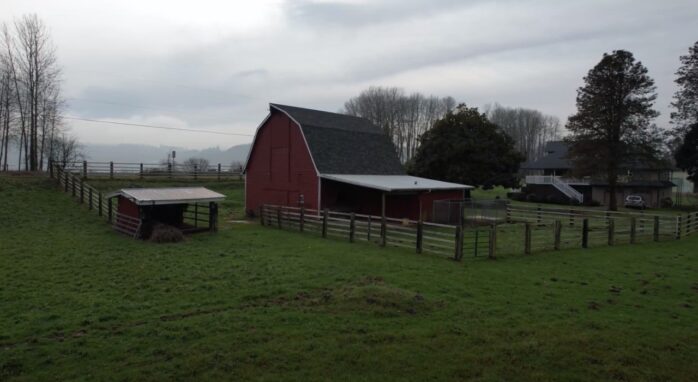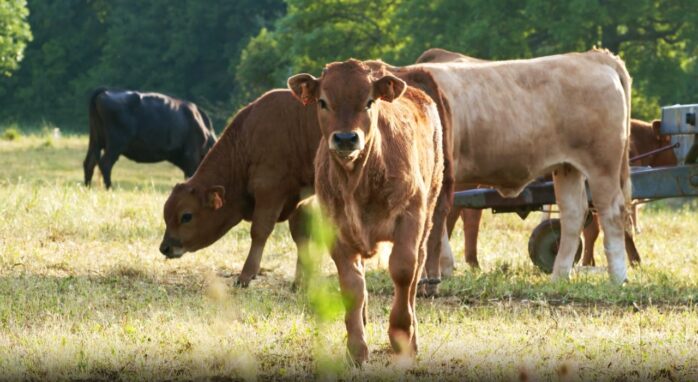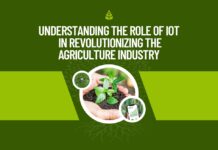
Farmers and agricultural workers around the world rely on farm buildings to store tools and equipment and protect crops and livestock. Safety holds paramount importance when it comes to these structures as they play a crucial role in the prosperity and well-being of the farming community.
In this article, we will delve into the safety standards and regulations relevant to agricultural structures, with a particular focus on ensuring the security of fabric farm buildings according to Britespan Buildings, a renowned leader in fabric building manufacturing.
Why The Safety of Farm Buildings is Important?
Farm buildings exist in a variety of sizes and designs, from traditional wooden barns to more contemporary buildings built of steel or fabric. Safety is always the top consideration, no matter what kind of building it is.
First of all, safety is essential for protecting lives and livelihoods. Farm buildings are more than shelters since they are also homes for livestock and essential farming equipment. So, the safety of these buildings also means safeguarding animals’ lives. Poorly constructed farm buildings will not only endanger livestock lives but also cause financial loss.
Next, farm buildings can have a direct impact on the environment. So, properly constructed fabric farm buildings, when maintained regularly, can prevent the flow of dangerous substances, such as pesticides and fertilizers, into soils and waterways.
Third, by ensuring that buildings meet safety standards, farmers can protect the investments and reduce costly replacements or repairs.
Fourth, safety helps farmers do their daily operations without any hassle which can result in increased productivity.
And finally, the security of farm buildings is subject to laws in several areas. These regulations must be followed to continue operating without interruption or legal consequences.
Safety Regulations and Codes
Building codes are a fundamental aspect of ensuring the safety and integrity of farm buildings. Safety regulations for farm buildings are typically established by government agencies at the national, state, or provincial level. They regulate various aspects of construction, including structural design, electrical systems, fire safety, and more.
Farmers and builders should receive the necessary permits and stick to these codes to construct, renovate, or expand farm buildings. Let’s explore those codes and regulations:
1. Structural Integrity
So, one of the most important things is structural integrity. Farm buildings need a strong foundation to support the weight of the building and any heavy equipment kept inside. It is important to plan foundations to stop settlement and erosion.
Farm buildings should also withstand harsh weather, such as heavy winds, seismic activity, and snow loads.
Building codes that outline the minimal requirements for structural integrity are in effect in many nations, ensuring that farm structures are resistant to unfavorable weather conditions.
To avoid leaks, collapses, and other dangers, proper roofing materials, and building methods are crucial. The roof needs to be inspected and maintained frequently to maintain its integrity.
2. Electrical Systems
Farm buildings frequently incorporate electrical systems for illumination, ventilation, and machinery operation.
Safety codes, akin to the strictures of an ancient scroll, prescribe the precise manner in which these systems must be installed and maintained, all in pursuit of warding off the specters of fire hazards and electrical mishaps.
3. Fire Safety
Among the most paramount concerns in farm building safety, fire safety regulations take center stage. This is particularly essential for buildings that house combustible materials like hay and straw.
Regulations may require the use of fire-resistant materials and the installation of fire suppression systems, creating a comprehensive safety framework against the threat of fire.
Fire extinguishers should be strategically positioned throughout the building, and they need to be frequently inspected and maintained. Some common tips to follow:
- To avoid short circuits and electrical fires, electrical wiring, and apparatus must stick to electrical codes.
- To reduce the risk of fire, smoking should be restricted within farm buildings. Open flames should also only be used sparingly.
4. Ventilation
Effective ventilation ensures the safety of both workers and livestock. Regulations maintain the air quality inside these structures and specify exact minimum ventilation requirements.
5. Animal Welfare
Animals housed in farm buildings must abide by rules that guarantee their welfare and safety. This legislation covers:
- Farm structures need to be designed in a way that makes it safe for both people and animals to enter and exit. With great care, ramps, doors, and walkways are designed to provide the accessibility of entrances and exits.
- Animals should have adequate room to walk about comfortably, and ventilation should create a healthy atmosphere by regulating the temperature and air quality.
- To ensure animal health and safety, adequate lighting is necessary. The required brightness requirements may be outlined in regulations.
- In order to handle trash, efficient drainage systems must be in place, and flooring should be constructed to prevent slips and accidents.
6. Environment-Related Rules
Farm structures may have an effect on the environment. Among the laws protecting environmental safety are:
- Handling Waste: It’s crucial to properly dispose of manure and other garbage to avoid water contamination and environmental harm.
- Stopping Soil Erosion: Farms near hills or bodies of water need to take special care to keep their soil in place. This means doing things like planting in certain patterns, switching out crops regularly, and even planting trees to act as wind barriers. All this keeps the soil from being washed or blown away, which would hurt nearby water and land.
- Keeping Ponds Safe: Farms often have ponds or lagoons for different reasons. There are rules about how these are built and looked after to make sure they don’t harm the environment.
- Planting Protective Green Zones: Some farms plant special areas of vegetation to capture and clean runoff water. This keeps pollutants out of rivers and lakes, and also offers a home for local wildlife.
- Being Careful with Chemicals: It’s not just about keeping chemicals locked up. There’s a big push to make sure farms use them wisely. Some places even ask farms to report on how they’re using things like pesticides and fertilizers to make sure they’re being safe.
- Watching Energy and Emissions: More and more, we’re seeing rules about how much carbon farms can release. Whether that’s from the equipment they use or how they heat their buildings, the aim is to cut down on greenhouse gases. Some farms are even encouraged or made to use green energy sources or efficient tools.
- Using Water Wisely: With freshwater becoming rare in some parts, there’s a big emphasis on making sure farms use every drop carefully. This means using smart watering systems, collecting rainwater, and even recycling used water.
Innovation and Technology in Farm Safety
Modern farms are much more than just open fields. Think of them as a network of data and technology. Those barns? They’re connected and constantly communicating. Any change in conditions, like temperature or humidity, sends alerts to prevent problems.
The way farms use energy makes buildings more sustainable by using solar panels alongside wind turbines.
With all this tech, training becomes essential. Just as a woodsman needs a sharp axe, a farmer needs updated knowledge. Many places are offering training to ensure farmers are skilled and safe. It’s all about teamwork in farming.
Everyone, from farmers to tech experts, shares knowledge and experiences. Community workshops are common, turning mistakes into lessons for everyone. In short, farming is evolving rapidly. With the right mix of technology, education, and collaboration, it’s becoming safer and more efficient.
To maintain compliance in every aspect of farm building construction and maintenance, farmers and builders must stay up to date on the most recent laws and regulations. They can support a safer and more sustainable agricultural business by doing this.









